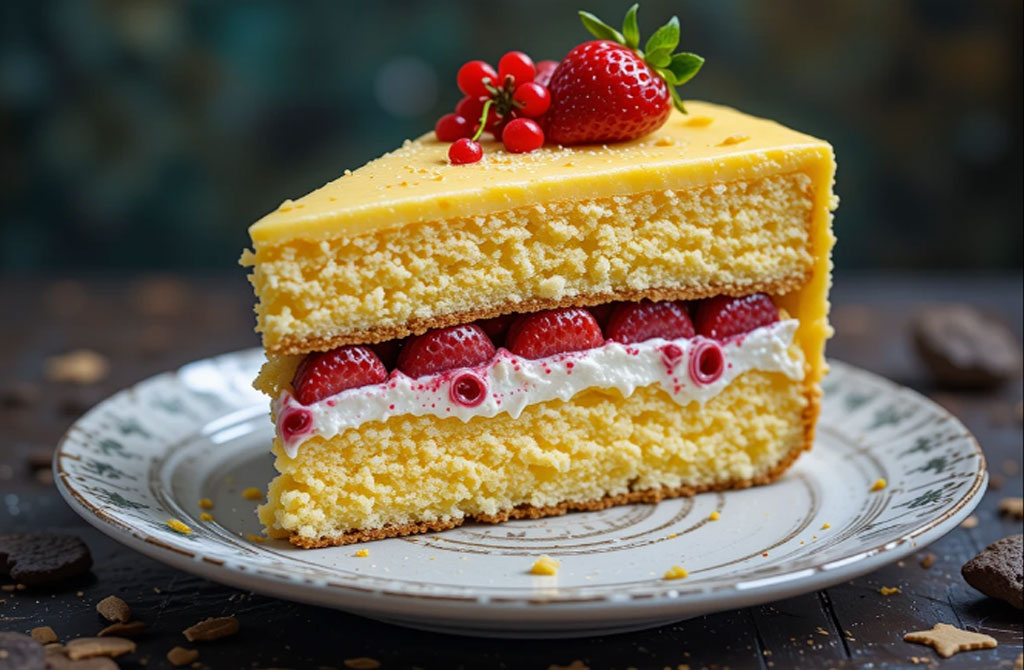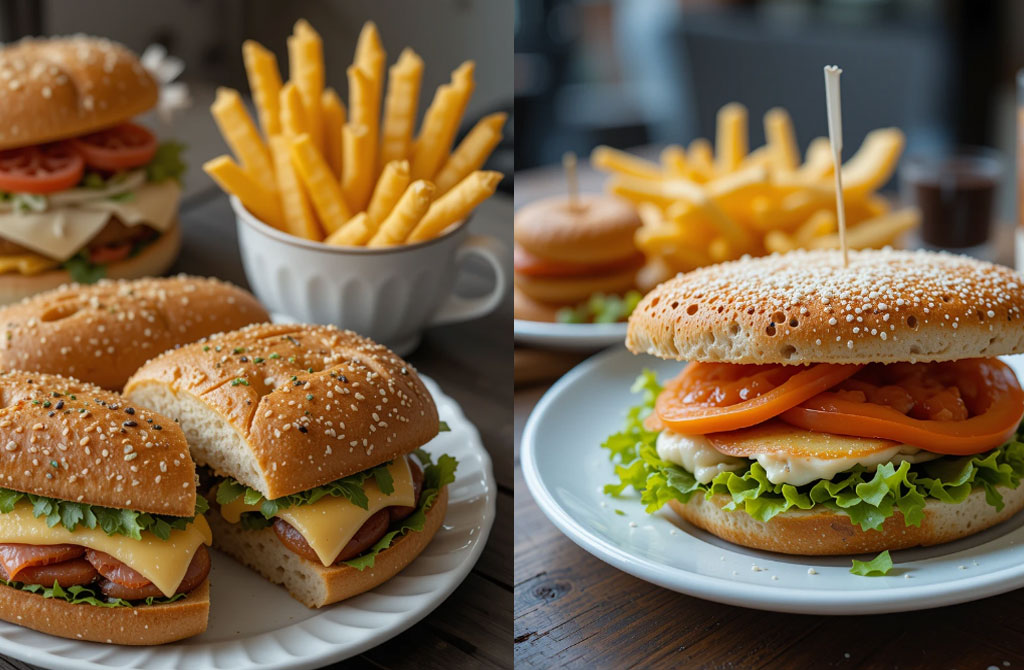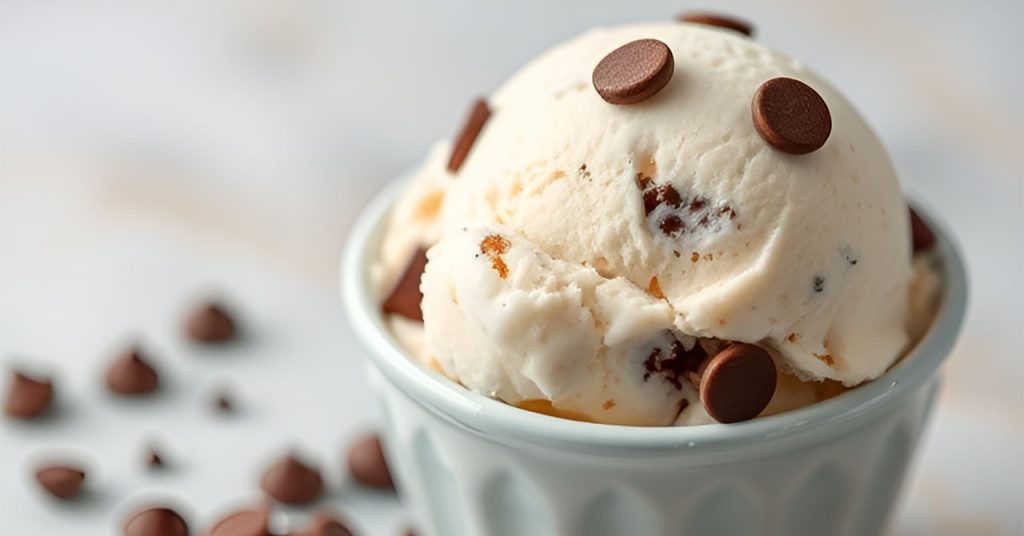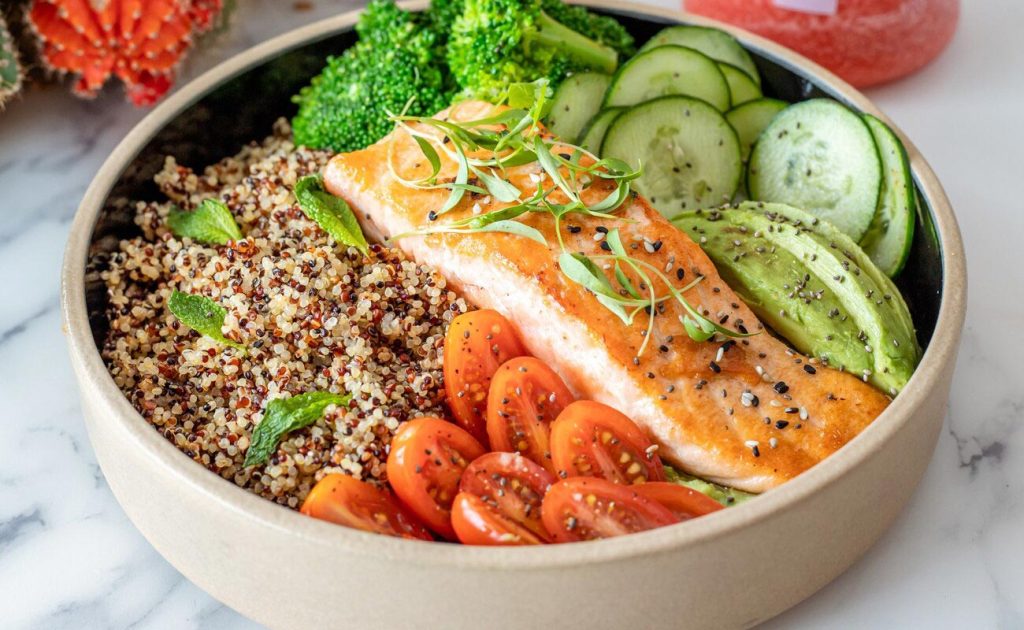There’s something about a Victoria sponge that never goes out of fashion. It’s one of those cakes that doesn’t need showing off. No fuss, no flair, just plain good. Soft sponge, a bit of jam, a touch of cream—job done. But don’t let the simplicity fool you. Getting it just right? That takes a bit of know-how and care.
The Victoria sponge, or Victoria sandwich as some call it, has long stood as a favourite in British baking. It’s not about flash. It’s not about layers or fancy toppings. It’s about balance. Sponge that’s light, not dry. Sweetness that doesn’t knock your teeth out. And that lovely moment when it melts in your mouth, with just the right kick from the jam.
Now, if you’ve had one from the shop, chances are you’ve been short-changed. Some of them are alright. Most? Bit of a let-down. Either the sponge is crumbly like an old scone, or it’s got that odd rubbery feel. And the jam? Well, let’s not even start on that pink stuff. If you want a proper slice, you’ve got to make it at home.
Getting the Sponge Right
First thing’s first: sponge. The sponge is the heart of the whole thing. Too dry and the whole cake feels tired. Too wet and you’ll end up with a sticky mess. The trick is in the mixing. Don’t rush it. Don’t beat it like it owes you money. And don’t overdo the flour.
You’ll want your butter soft, not melted. Leave it out for an hour, or just give it a bit of a nudge in the microwave if you’re in a pinch. Same with the eggs. Room temp, always. Cold eggs can muck things up. They don’t mix right with the butter and can make the batter split. And if it splits, you’re halfway to disaster.
Now, here’s a tip. If you’re using self-raising flour, that’s fine. But it’s worth adding a smidge of baking powder. Not a lot. Just a pinch. It gives that extra bit of lift without turning your sponge into a balloon. And don’t be scared of folding the flour in slow. It’s not a race.
Some folks swear by weighing the eggs and matching the weight to the sugar, butter, and flour. Others just go for a standard 4-4-4-2 ratio. Either way works, so long as you’re paying attention. What matters most is the texture. You want the batter smooth and a bit fluffy, not thick like putty.
The Bake
Here’s where things can go pear-shaped. Oven’s got to be preheated. Don’t shove it in cold or half-warmed. And don’t open the door mid-bake. Every time you do, you’re letting out the heat and messing with the rise.
It usually takes about 20 to 25 minutes at 170°C in a fan oven. If you’re using a gas oven, aim for gas mark 4. You’ll know it’s done when the sponge springs back when you give it a gentle poke. If it leaves a dent, it needs longer. And if it smells like toast, you’ve gone too far.
Also, get yourself two tins that are the same size. Don’t try to split one big cake after—it’s never quite right, and you’ll end up with a mess of crumbs and jam everywhere. Grease the tins properly. Line the base with paper. And when they’re out, let them cool fully. Don’t rush into layering. Warm sponge and cream do not mix well.
Filling It Right
Jam first or cream first? That’s been a row for years. Truth is, it doesn’t matter much. Do what you like. But it does matter what jam you use. Strawberry’s the classic. Raspberry’s lovely too. But skip the cheap stuff. That bright red gloop with barely a berry in it? Bin it.
Look for jam that’s thick, with real fruit bits in it. Not too runny. It needs to hold its place, not slide off the sponge. Some folks like to warm it slightly so it spreads better, but only a touch. Don’t cook it.
As for the cream, well, that’s another debate. Some say a proper Victoria sponge doesn’t even have cream. Just jam and sponge. Others can’t imagine it without. If you’re going for cream, use double cream. Whip it thick but not stiff like meringue. You want it soft and pillowy.
Buttercream? Well, you could. But it does make it a different sort of cake. Heavier. Richer. If you want a classic afternoon tea feel, stick with whipped cream. But again, you do you.
Dust the top with icing sugar once you’ve sandwiched it all together. Don’t go overboard. Just a light sprinkle. Enough to catch the light.
Little Touches That Make It Yours
Once you’ve got the basics down, you can start playing around. A bit of lemon zest in the sponge gives it a nice twist. Vanilla’s always a winner too. Not the cheap stuff—get the real extract if you can.
Some like to swap the jam for curd, or even a bit of stewed fruit. It’s not traditional, but it’s tasty. A spoonful of blackberry jam and a hint of cinnamon in the sponge? Lovely in autumn. Or a summer take with fresh strawberries tucked into the cream? Spot on for a garden gathering.
You can even toast it lightly in a pan the next day if you’ve got leftovers. Bit cheeky, but warm sponge and jam? Can’t argue with that.
The Quiet Joy of a Proper Slice
There’s something a bit comforting about a slice of Victoria sponge. It’s not trying to show off. It’s not shouting for attention. It’s just there, ready to be enjoyed, quietly perfect in its own way.
Maybe it reminds us of family get-togethers, or lazy Sundays with a brew. Maybe it’s the sort of cake your gran used to make, with her pinny on and flour in her hair. Or maybe it’s just the kind of treat that doesn’t need a reason.
It’s the sort of bake that doesn’t go in and out of fashion. It doesn’t try to follow trends. You won’t see it covered in fondant or stacked six tiers high. And thank goodness for that.
A proper Victoria sponge is a bit like your favourite jumper. You know where you are with it. It fits right, feels familiar, and never lets you down.
On Serving and Sharing
Best served on a proper plate, with a fork. Not one of those paper napkin jobs where it falls apart before it gets to your mouth. And it deserves a proper brew. Nothing fancy. Just a decent cuppa, maybe a splash of milk.
You can take it to work. Serve it after tea. Bring it out for birthdays, even if it’s not shaped like a cartoon character. Or just bake one because it’s Tuesday and you felt like it. No one’s going to complain.
The good thing about it? It doesn’t scream occasion. But somehow, it always feels like one.
It’s All in the Bake
Baking a Victoria sponge isn’t hard, but it does ask for care. It’s not about chucking everything in and hoping for the best. It’s about knowing your oven. Trusting your instinct. Taking your time.
Once you’ve nailed it, though, you’ll find yourself coming back to it again and again. Because no matter how many new cakes come and go, there’s something about that classic sponge, jam, and cream that feels just right.
It’s not flashy. But it’s proper. And in a world full of overdone bakes, maybe that’s exactly what we need.
Proper Victoria Sponge Recipe
Ingredients (for two 20cm tins)
- 200g unsalted butter (softened)
- 200g caster sugar
- 4 medium eggs (room temperature)
- 200g self-raising flour
- 1 tsp baking powder (optional, for a little extra lift)
- 1 tsp vanilla extract (optional but nice)
For the filling:
- 4 tbsp good-quality strawberry or raspberry jam
- 150ml double cream (whipped until soft and thick)
- Icing sugar (for dusting)
Method
- Prep the tins
Grease two 20cm round cake tins. Line the bottoms with baking paper. Set the oven to 170°C fan (or 180°C regular / gas mark 4). Always best to preheat—no shortcuts. - Cream butter and sugar
Pop the butter and sugar into a bowl. Beat until light and fluffy. You want it pale and a bit airy. - Add the eggs
Crack in the eggs one at a time. Mix well after each one. If it starts to look like it’s curdling, add a spoonful of the flour to steady it. - Fold in the flour
Sift in the self-raising flour and baking powder (if using). Fold gently with a spatula or big metal spoon. Don’t bash it about—just gentle turns until it’s all smooth. Add the vanilla if you fancy. - Bake the sponges
Split the mixture between the tins. Level it out with the back of a spoon. Pop them in the oven and bake for around 20–25 minutes. They’re done when the tops are golden and spring back with a soft poke. A skewer should come out clean. - Let them cool
Take the cakes out the tins carefully. Peel off the paper. Leave them to cool fully on a wire rack. Don’t rush it or the cream will melt when you build it. - Fill and finish
Once the sponges are cold, spread jam on one half. Then spoon or pipe the whipped cream over the jam. Gently pop the other sponge on top. Give it a light dust of icing sugar.
Tips from the kitchen:
- Don’t skip the room temp ingredients. They help it mix better.
- Use proper jam. None of that bright jelly stuff.
- Don’t overwhip the cream. It should hold shape but still feel soft.
- If you don’t want cream, leave it out. Just jam is the old-school way.






